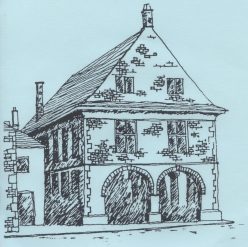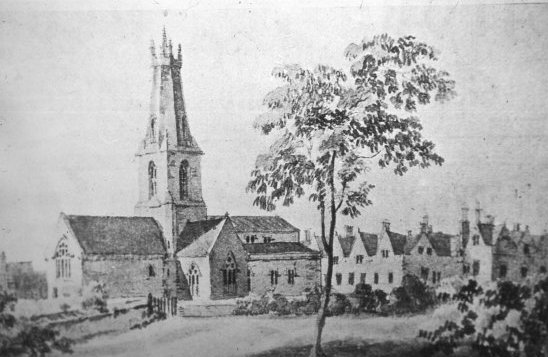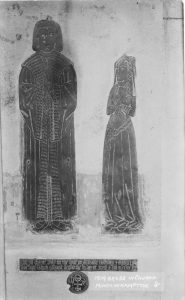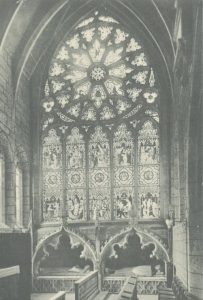The first recorded reference to this area is in the eighth century, when King Aethelbald made a gift of land to the church in Worcester, and although the boundaries of this gift are unknown, they certainly included what was later to become the manor of Hampton in the Hundred of Longtree. The manor of Hampton was far larger than the present civil parish, and in the sparsely populated countryside natural features like hills and rivers marked the boundaries; it was defined as lying within a circle of woods, stretching from Colecumbe to Burleia and Rodeberowe. It was not necessary to be more precise; the villains or serfs knew to which manor they owed allegiance. To the north, the line of the River Frome marks the old boundary between Bisley and Longtree Hundreds; the valley is still well wooded on the north-facing slope and the stream, small though it was, was easily picked out as a landmark. To the south lay the manor of Avening that was for many centuries in the same ownership.
After the Conquest the lands were confiscated and given by William I to L’Abbaye aux Dames in Caen, Normandy. Norman rule brought a degree of stability to England, and the manor was run as an estate bringing wealth to the absentee landlord – the Abbess – through the sale of wool, grain and other agricultural goods. The demesne ground of the old manor is now known as the Great Park, and the manor house itself stood where the school now is. The local historian, Bigland wrote in 1791 “The large mansion near the Church … was occupied by the firmarius or receiver of Abbey rents”, more often known as the steward, and one, Simon of Felsted, was enclosing the park in the C12th, to provide wood and meat, through the hunting of deer.
Like many other places in the realm, charters were passed elevating Minchinhampton to the status of a town, giving the right to hold a market and extract tolls, the first probably in 1213. This was when it first became known as Minchin-Hampton, from the old word mycenen meaning nun. A later charter was granted by Henry III, which, when confirmed at Winchester on September 29th 1269, stated “our beloved in Christ the Abbess and Nuns of Caen that they and their successors should forever be permitted to have a weekly market on Tuesday at their manor of Hampton Monialium (Minchinhampton) in the County of Gloucester and a yearly fair there lasting five days namely on the Eve and Feast of Holy Trinity and the three days following”. It was, of course, the income from the tolls that was of interest to the absentee landlords at Caen, and it was a jealously guarded right, as another market opening close by would affect trade.
With the spread of Christianity in Saxon times people began to gather around the churches to celebrate holy days and this became a chance for the sale of surplus goods, because travel was slow and sometimes dangerous and the crowds were in one place. As a priest is recorded in 1086 there must have been a religious building in Hampton, but no trace of it remains. By Norman times the church was the most weatherproof building in a locality, and would be used for many secular purposes such as courts, storage of valuables and meetings, and the porch or churchyard was an obvious site for a market. The original Holy Trinity Church, taking its dedication from the mother church in Caen, seems to have been similar to Holy Cross at Avening, but was in a parlous state in the C19th when the nave and chancel were rebuilt. Fortunately the south transept with its excellent rose window remains.
A statute was passed in 1285 forbidding fairs in churchyards, and by 1448 trading on a Sunday was banned, making Saturday the market day in many places. The trading activities had to move away from the churchyard, but often set up “just over the wall” and Minchinhampton, like many other towns, has its market place very close to the church. The market place was probably much larger then, with stalls set up in what we know as Bell Lane and the area on which the present Market House stands being open space. For the visitor or resident alike, to stop at the bottom of Bell Lane and take a moment to visualise a manor house to the west, church to the east and market place to the south is to take a step back in time to the centre of the mediæval town of Minchinhampton.



